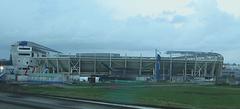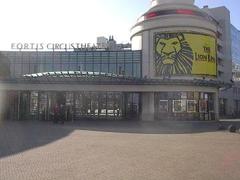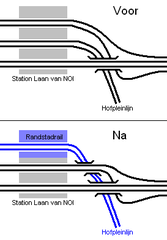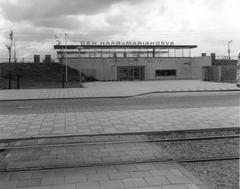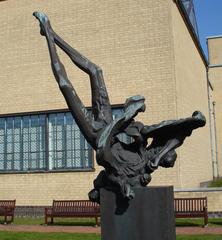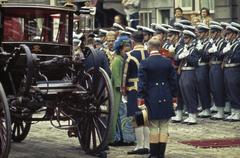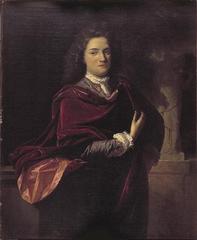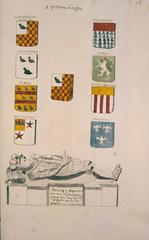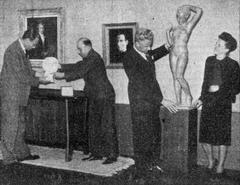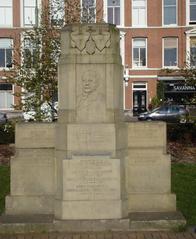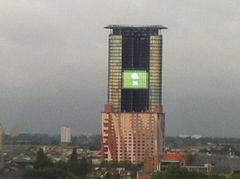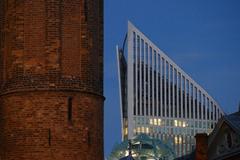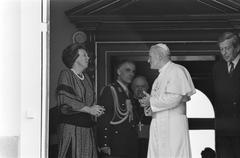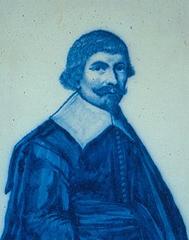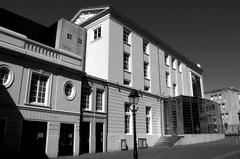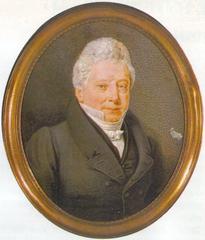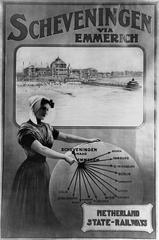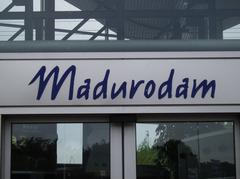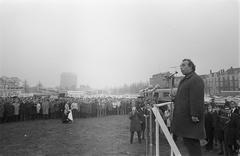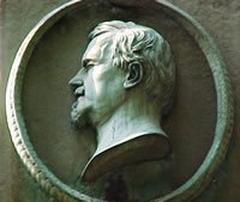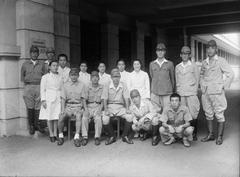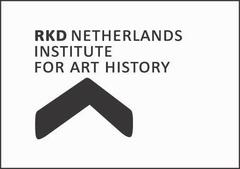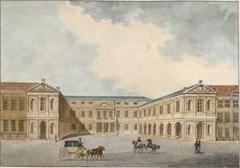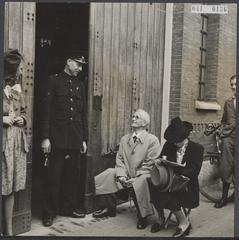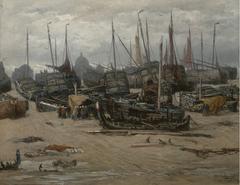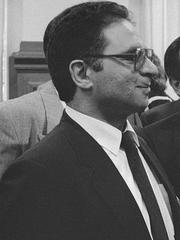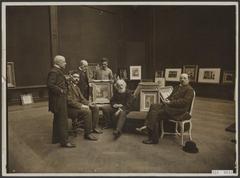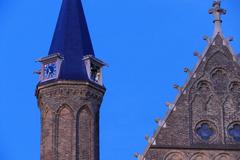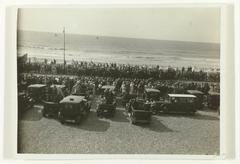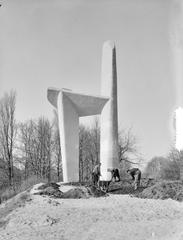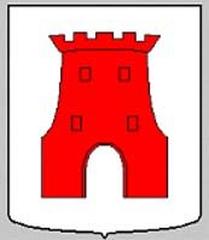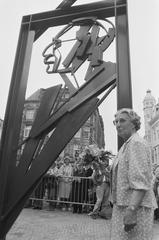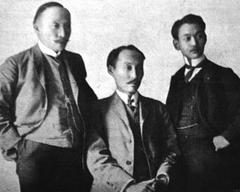Teresia van Avilakerk: Visiting Hours, Tickets, and Historical Significance in The Hague
Date: 04/07/2025
Introduction
Nestled in the heart of The Hague, the Teresia van Avilakerk stands as a unique testament to the city’s religious, architectural, and cultural history. Dedicated to Saint Teresa of Ávila—a renowned 16th-century Spanish mystic and reformer—this Roman Catholic church reflects the complexities of faith in a predominantly Protestant landscape. Originally a clandestine chapel for the Spanish legation in 1649, the church evolved into a neoclassical monument designed by royal architect T.F. Suys between 1839 and 1841. Today, it is the only remaining monumental Waterstaatskerk in The Hague, recognized for its historic, artistic, and community value (Reliwiki; haagsorgelkontakt.nl).
This guide details the church’s historical background, architectural features, visiting information, and its ongoing role within The Hague’s multicultural and religious landscape. Whether you are a history buff, architecture enthusiast, pilgrim, or traveler, Teresia van Avilakerk offers an enriching and contemplative experience.
Table of Contents
- Overview and Historical Context
- Architectural and Artistic Highlights
- Religious and Cultural Role
- Visitor Information
- Musical Heritage: The Loret Organ
- Frequently Asked Questions (FAQ)
- Conclusion and Call to Action
- References
Overview and Historical Context
Origins and Dedication
Teresia van Avilakerk’s roots reach back to 1649, when the Spanish ambassador, protected by diplomatic immunity, established a concealed chapel above his coach house on Westeinde. This allowed Catholics in The Hague to worship discreetly during a time of Protestant dominance (haagsorgelkontakt.nl; denhaag.com). The present neoclassical church, built between 1839 and 1841 under T.F. Suys, marked a transition from clandestine worship to a more visible Catholic presence, reflecting the gradual expansion of religious freedoms in the Netherlands (rijksmonumenten.nl).
Historical Significance
The church is an emblem of the Catholic revival in 19th-century Netherlands and a symbol of integration within a city historically governed by Protestant authorities. Its dedication to Saint Teresa of Ávila, a reformer and Doctor of the Church, further highlights the church’s spiritual and international connections (GPSmyCity).
Architectural and Artistic Highlights
Exterior
The neoclassical façade features Ionic pilasters, a central risalit with a pediment, and a square bell tower, lending the church a dignified yet understated presence. The presbytery is uniquely integrated under the same roof as the choir, emphasizing the unity of clergy and congregation.
Interior
Inside, the church is laid out as a three-aisled hall with Ionic columns and cross-ribbed vaults. The neobaroque interior is adorned with original furnishings by the Leuven sculptor Charles Geerts, including the high altar, pulpit, confessionals, and communion rail. Noteworthy decorative elements also include:
- Stained glass windows (1916): Illuminating the nave and enhancing the meditative ambiance.
- Grisaille glass and Stations of the Cross: Artwork by Van Straten and Anton Brouwer, respectively, deepen the church’s spiritual narrative.
- Polychrome restoration (1992): Returned the interior to its original decorative scheme.
The Diplomatic Connection
Behind the choir, the former rectory and chapels recall the church’s early diplomatic functions, serving the Spanish legation in The Hague (rijksmonumenten.nl).
Religious and Cultural Role
Teresia van Avilakerk actively serves as a parish church, hosting Polish-language Masses and special liturgical celebrations, including the feast day of Saint Teresa on October 15. It is a vibrant hub for both Dutch-speaking and international Catholics, reflecting The Hague’s cosmopolitan population (ExploreCity). The church also participates in interfaith initiatives, cultural events, and social outreach, reinforcing its role as a center for peace, justice, and community.
As a recognized rijksmonument and listed in the “Top 100 of the Rijksdienst voor de Monumentenzorg” (1990), the church is celebrated for its historic and cultural value (denhaag.com).
Visitor Information
Visiting Hours and Tickets
-
General Visiting Hours:
- Monday to Saturday: 10:00 AM – 5:00 PM
- Sunday: 12:00 PM – 5:00 PM
(Note: Actual visiting times may vary based on Mass schedules and special events; visitors are advised to consult the parish or official websites for current details.)
-
Admission: Free; donations for preservation are appreciated.
Accessibility
- Main entrance equipped with a ramp.
- Facilities accommodate visitors with mobility challenges.
- Assistive listening devices available for tours upon request.
Guided Tours and Events
- Guided Tours: Offered on Saturdays at 11:00 AM, focusing on the church’s history and art.
- Special Events: The church participates in Open Monumentendag (Heritage Days) and may host concerts or lectures. Check the official website or parish office for updates.
Location and Transportation
- Address: Westeinde 12a, 2512 HD, The Hague.
- Public Transport:
- Tram lines 1, 9, 16; nearby stops.
- Bus routes also available.
- Bicycle parking near the entrance.
- Parking: Limited street parking; closest garage at Grote Markt.
Visitor Tips and Nearby Attractions
- Combine your visit with nearby sites: Mauritshuis Museum, Binnenhof, Peace Palace—all within 15 minutes by foot or tram.
- Photography: Permitted (no flash); request permission for professional shoots.
- Dress and Conduct: Modest attire and respectful behavior are encouraged.
Musical Heritage: The Loret Organ
A highlight for music lovers is the historic 1851 François-Bernard Loret organ. Its richly carved neobaroque case, crafted by Charles Geerts, is a focal point of the sanctuary. Though currently unplayable, restoration efforts are underway with community and government support (haagsorgelkontakt.nl). The church aspires to revive its tradition of sacred music and organ concerts upon completion of the restoration.
Frequently Asked Questions (FAQ)
Q: What are the church’s visiting hours?
A: Typically Monday–Saturday, 10:00 AM–5:00 PM; Sunday, 12:00 PM–5:00 PM. Times may change for services or events.
Q: Is there an entrance fee?
A: No, admission is free. Donations are welcome.
Q: Are guided tours available?
A: Yes, every Saturday at 11:00 AM, and during special events.
Q: Is the church wheelchair accessible?
A: Yes, via a ramp at the main entrance.
Q: Can visitors attend Mass?
A: Yes, especially during Polish Sunday Mass. Mass schedules are available on the parish website.
Q: Are photos allowed?
A: Yes, non-flash photography is permitted; professional photography requires prior approval.
Conclusion and Call to Action
Teresia van Avilakerk is a hidden gem, offering a profound blend of spiritual, historical, and artistic experiences in the center of The Hague. Its neoclassical architecture, neobaroque interiors, and engaging community life invite visitors to discover an integral part of the city’s heritage. As a living monument, it continues to foster dialogue, cultural enrichment, and community outreach.
To make the most of your visit:
- Check the latest information on DenHaag.com or the parish’s official site.
- Download the Audiala app for guided audio tours.
- Follow the church and city’s cultural channels for event updates and restoration news.
Experience the serene beauty and storied legacy of Teresia van Avilakerk—where history, faith, and culture converge.
References
- Teresia van Avilakerk, Reliwiki, 2025
- Teresia van Avilakerk, Haags Orgel Kontakt, 2025
- Teresia van Avilakerk, DenHaag.com, 2025
- Saint Teresia of Avila Church, GPSmyCity, 2025
- Teresia van Avilakerk Monument Listing, Rijksmonumenten.nl, 2025
